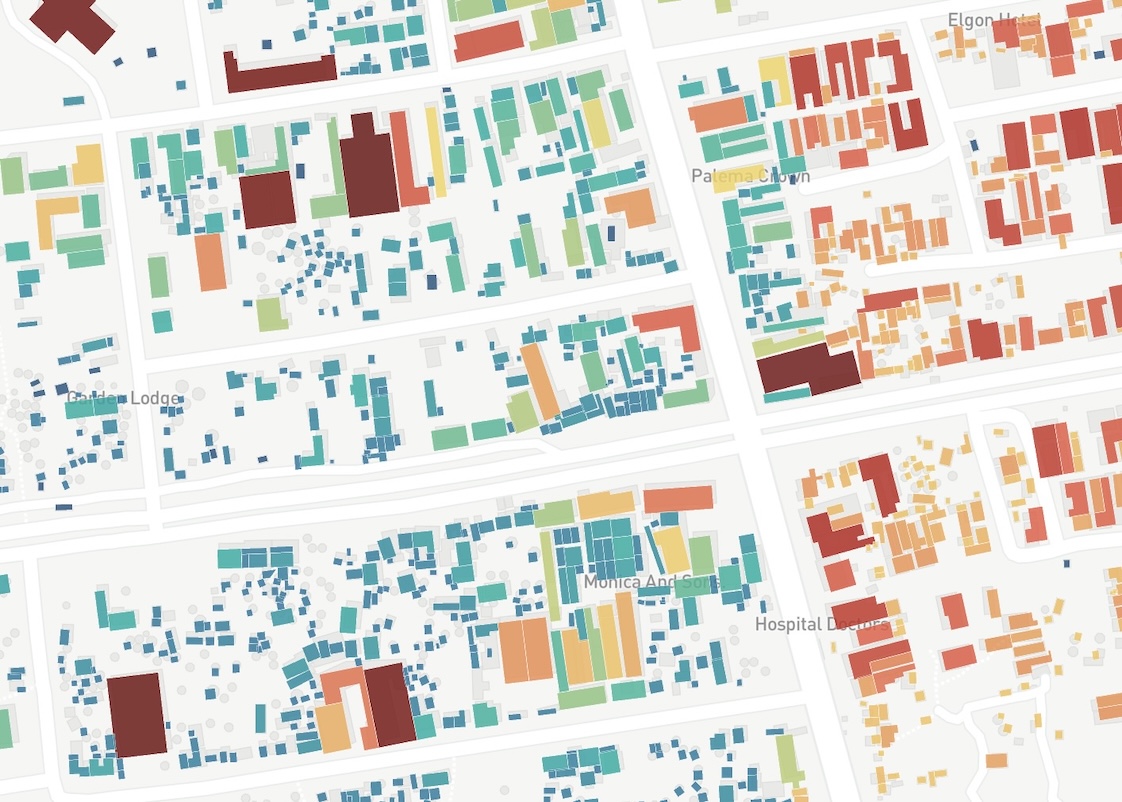
Powering progress: mapping energy use building by building

Open Energy Maps®: Open Data Platform
The Opportunity
An estimated 770 million people lack electricity access, and 3.5 billion lack reliable supplies, in emerging markets and developing economies.
As these regions develop, energy infrastructure must be deployed intelligently to enable economic growth, improve health and education outcomes, enhance climate resilience for the world’s most vulnerable populations, and mitigate climate change.
In order to achieve these goals in accordance with timelines set forth by the Paris Agreement and United Nations Sustainable Development Goals, a significant scaling of investment will be required. The IEA and IFC together estimate that private sector annual financing for clean energy in LMICs outside of China will need to increase from $135B today to $0.9-1.1T by the early 2030s, with an additional $80-100B of concessional support per year required to catalyze this influx.
Our Approach
State-of-the-art, building-level electricity access & demand estimates enable energy planning optimization and investment de-risking in EMDEs worldwide.
Our Philosophy
Removing barriers to economic development and prosperity in EMDEs is core to Biospheric AI’s mission as a social enterprise.
Our Stakeholders
Our stakeholders include utilities, government ministries, development finance institutions, donor agencies, private companies, and the public.
Survey Alternative
Industry standard demand assessment involves direct community engagement, typically in the form of survey administration. This is costly in terms of both time and manpower, and produces results with limited reliability due to the consumer tendency to declare aspirational consumption values exceeding their ability-to-pay.
Project Bankability
Accurate, high-resolution demand datasets including estimation uncertainties aid in the projection of renewable energy project ROIs during the due diligence process.
Targeting Subsidies
Having an accurate depiction of access and demand distributions enables the design of efficient tariff subsidies so the social benefit from state financial resources is maximized and energy efficiency is appropriately incentivized.
Optimizing Design
Use as inputs to techno-economic electricity system planning tools to make cost-optimal technology selections (standalone, minigrid, or grid-connected) and design efficient grid extension.
Concessional Support
Determining the appropriate type and level of programmatic support to crowd in private investment requires accurate and up-to-date information reflecting consumer access and ability-to-pay.
Policy Framework
Up-to-date consumer demand profiles provide regulators valuable insight into where economic growth is lagging supply, thus serving as the basis for demand stimulation programs.

